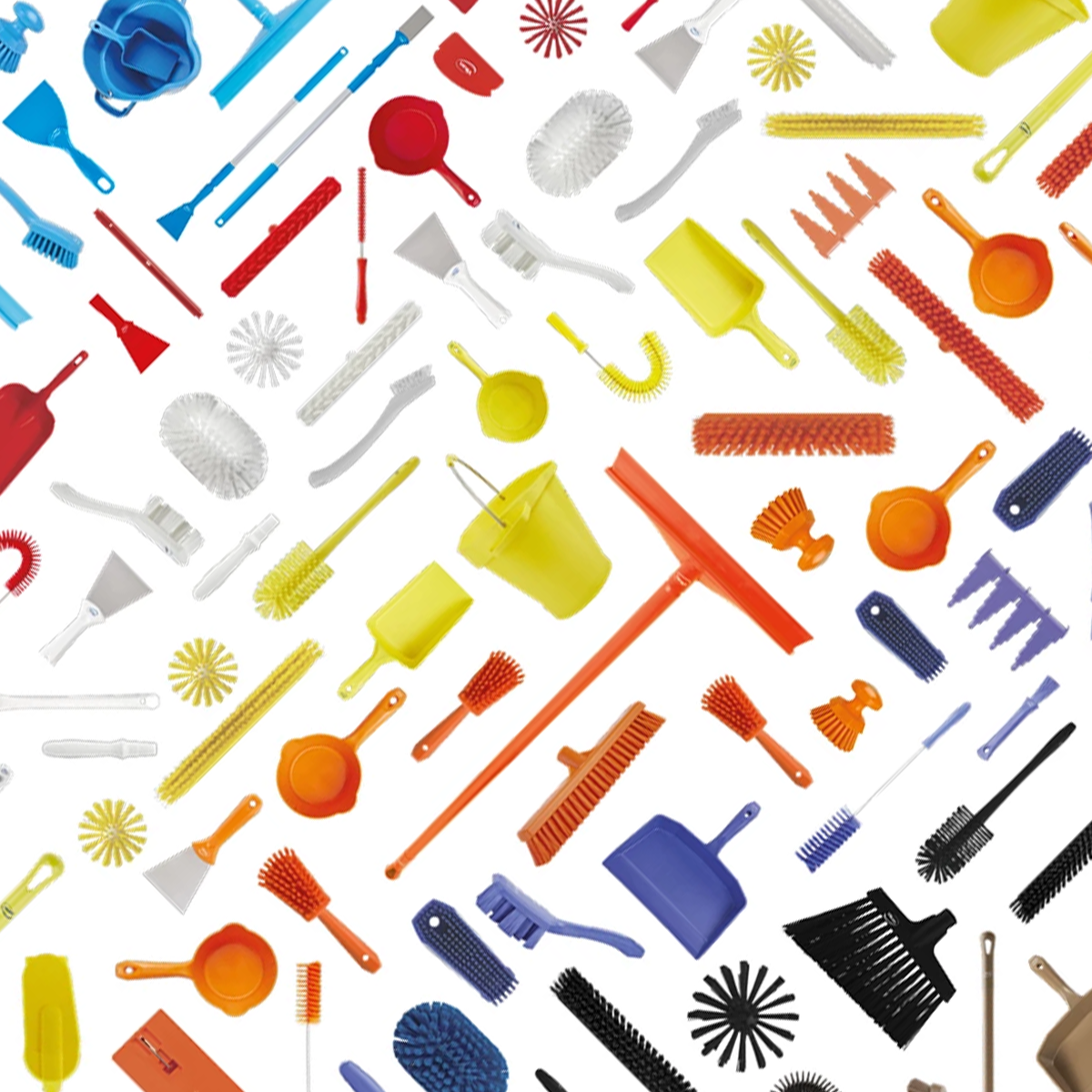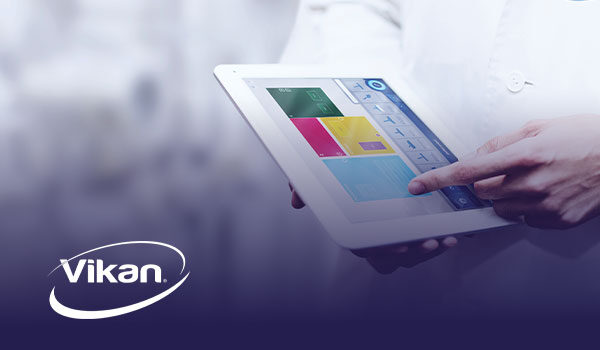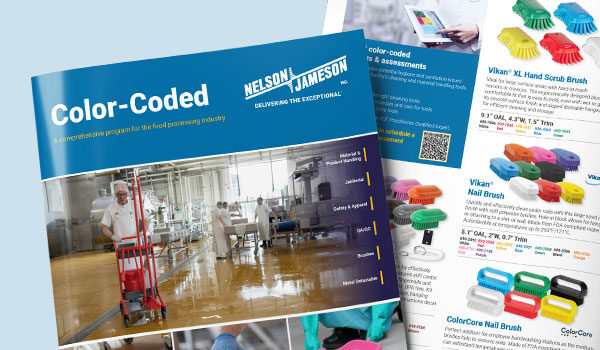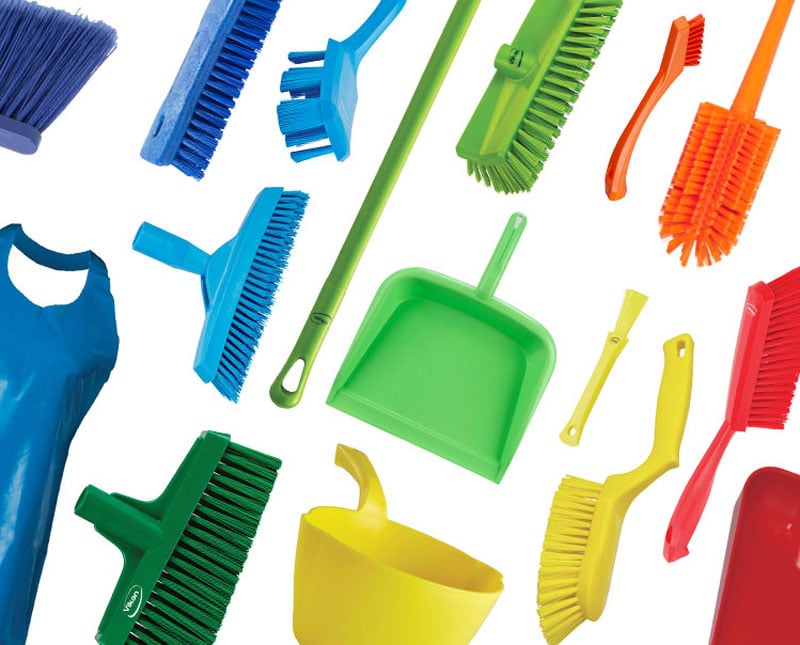
Zoning cleaning equipment, food handling tools, and other equipment and utensils into well-planned, color-coded areas enables you to achieve even more in the food safety field by reducing the risk of cross-contamination from one area to another.
Color coding is easy to implement if done correctly from the start. This guide gives you a brief introduction to the benefits of color coding – and some practical tips on how to put it into practice.
Color coding helps ensure greater food safety by making it easier to more effectively separate processes, zones, and equipment in your food production setup, and thus minimize cross-contamination. Color coding can be embedded into your work processes as a natural part of your Good Manufacturing Practices (GMP)s, or as a proactive risk-reduction step as part of your HACCP prerequisite program.
The GFSI (General Food Safety Initiative) approved food standards BRC, FSSC22000, IFS, and SQF all require special measures to prevent cross-contact and cross-contamination. Color coding is ideally suited to this. In the BRC standard, it is mandatory that your cleaning equipment is suitably identified for intended use, which could mean color coding.
Use contrasting colors. Color contrast enables you to easily spot plastic fragments or stray bristles from food production equipment. You should, of course, always inspect and replace cleaning equipment and food-handling tools as soon as they begin to show signs of wear.
1 in 12 men and 1 in 200 women are color-blind. Use different shades and contrasts to make it easier for color-blind staff to differentiate colors. If in doubt, take a photo of the colors and convert the photo into black and white. If you can tell the difference, the shade differentiation is strong enough.
We recommend not combining colors on individual tools or tool groups but instead using the same color for handles as well as broom/ squeegee heads
Keep it simple. Limit the number of colors as much as possible. Do not try to assign colors for each and every step of a complicated process. If the color-coding system is too complicated, your staff may not understand or follow it.
The colors you select should make sense to your employees. If possible, you should select colors that are logically associated with a specific zone or food product, though they should still visually contrast.
Support your color-coding system with good signage (using images or multilingual text where necessary) to ensure it is followed correctly. Avoid complicated color combinations. We recommend not combining colors on individual tools or tool groups, but instead using the same color for handles as well as broom/ squeegee heads.
A site survey will provide you with a color-coding plan that you can use as an overview of the complete facility or area.
Implement your color-coding system within all the zones affected at the same time. For greater clarity, have a definite date for phasing out your old system, and a clear start date for your new color-coded system.
Meet with each of your shift managers first to ensure they understand the system, then roll out the program to other employees.
We recommend using the standard colors (green, blue, red, white, and yellow) in the larger color zones where many different kinds of cleaning equipment and food handling tools are needed. You can use other colors – such as pink, orange, purple, and lime – in smaller areas focused on high risk and allergen control that use fewer pieces of cleaning equipment and food handling tools.
Make sure tools are stored in the same area where they are used, and use color-coded storage, such as shadow boards and wall brackets.
Ensure your purchasing department, quality manager, and employees use the same documentation so everyone can follow the same system.
Regularly monitor and review your color-coding plan and check and maintain your equipment to maximize your control of cross-contamination.
In the food production and processing industry, tightly controlled systems and procedures are essential for complying with regulations – and ensuring food safety. A color-coding system for your work areas, tools, and equipment is a simple way to prevent cross-contamination and ensures you are better prepared to meet GFSI-approved food safety standards. When correctly implemented, color-coding should be easy to follow and encourage employees to take extra responsibility for food safety and cleanliness in their work area.

Vikan is a leading supplier of hygienic cleaning tools and insight for the food & beverage industry and other hygiene-sensitive environments in North America.

November 13, 2025
In the demanding field of occupational safety, protecting workers requires more than just offering equip...

November 12, 2025
For professionals who must maintain productivity and a secure grip in frigid conditions, the MCR Safety ...
.jpg)
November 12, 2025
In demanding, hygiene-sensitive environments like food manufacturing and dairy processing, effective pro...

Recognize and address possible hygiene and sanitation challenges based on the cleaning and material handling equipment available in your facility.
Through a discovery call, virtual, or on-site assessment, Vikan SQF Practitioner certified specialists will assist in confirming that your system and cleaning tool inventory aligns with your risk management objectives while pinpointing any missing tools and enhancing maintenance and usage practices. Evaluate whether your existing tools are utilized in the most effective manner, or determine if a more suitable tool exists for the task at hand. Ensure that your tools comply with all relevant standards and regulatory requirements. Site evaluations encompass a summary survey, an overview of the location, a color-coded factory layout plan, product suggestions, a recommended order form, and a proposal for a follow-up survey.
Food Safety, Sanitation, Cleaning Tools, Color Coding

This is a comprehensive program for the food processing industry. Nelson-Jameson brings together the most extensive collection of color-coded products for material handling, product handling, janitorial, safety, apparel, QA/QC, and metal-detectable applications. With the right pieces, a color-coding system is a powerful tool in preventing cross-contamination of allergens and food-borne illnesses that can lead to sickness or expensive product recalls.

Food Safety, Sanitation, Cleaning Tools, Color Coding

With existing and emerging threats, food safety has never been more important to food manufacturers in protecting their consumers and their organization.
Color Coding

Laboratory, Color Coding, Food Safety